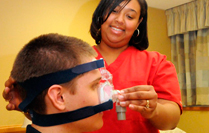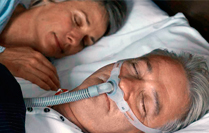
BRIDGEPORT, W.Va. — The doctors wanted to talk about illness, but the patients — often miners, waitresses, tree cutters and others whose jobs were punishingly physical — wanted to talk only about how much they hurt. They kept pleading for opioids like Vicodin and Percocet, the potent drugs that can help chronic pain, but have fueled an epidemic of addiction and deadly overdoses.
“We needed to talk about congestive heart failure or diabetes or out-of-control hypertension,” said Dr. Sarah Chouinard, the chief medical officer at Community Care of West Virginia, which runs primary care clinics across a big rural chunk of this state. “But we struggled over the course of a visit to get patients to focus on any of those.”
Worse, she said, some of the organization’s doctors were prescribing too many opioids, often to people they had grown up with in the small towns where they practiced and whom they were reluctant to deny. So four years ago, Community Care tried a new approach. It hired an anesthesiologist to treat chronic pain, relieving its primary care doctors and nurse practitionersof their thorniest burden and letting them concentrate on conditions they feel more comfortable treating.
Since then, more than 3,000 of Community Care’s 35,000 patients have seen the anesthesiologist, Dr. Denzil Hawkinberry, for pain management, while continuing to see their primary care providers for other health problems. Dr. Chouinard said Community Care was doing a better job of keeping them well over all, while letting Dr. Hawkinberry make all the decisions about who should be on opioid painkillers — a role that requires not only expertise, but endless vigilance.
“I’m part F.B.I. investigator, part C.I.A. interrogator, part drill sergeant, part cheerleader,” said Dr. Hawkinberry, who is also an amateur mountain climber.
Evidence that the musician Prince had become dependent on pain pills he took for hip problems before his recent death suggests just how hard it can be, even for people with access to the best doctors, to safely control chronic pain. Community Care is trying to do so for a disproportionately poor population, in a state that has been ground zero for opioid abuse from the very beginning of what has become a national epidemic.
Now, the difficult work of addressing the nation’s overreliance on opioids, while also treating debilitating pain, is playing out on a patient-by-patient basis, including in a patchwork of experiments like this one. About 70 percent of the 1,200 patients currently in Community Care’s pain management program receive opioids as part of their treatment, which may also include non-narcotic drugs, physical therapy, injections and appointments with a psychologist.
Many had already been on opioids “for many years before they met me,” Dr. Hawkinberry said, adding that his goal is to get them on lower doses, and to try other ways of managing their pain.
Rigorous screening helps weed out people who are looking to abuse painkillers, Dr. Chouinard said. Patients who are prescribed opioids have to submit urine samples at each monthly appointment and at other random times, and to bring their pills to every visit to be counted. About 500 have been kicked out of the program for violations since it started in 2012.
In addition, Community Care’s pain management clinic is closely monitored by the state as one of six licensed to operate under a 2012 law meant to cut down on pill mills.
The organization’s primary care providers talk frequently with Dr. Hawkinberry about the patients they share with him. Because they use the same electronic medical record system, they can keep close tabs on how their patients’ pain is being treated — and he on how their other health problems, like high blood pressure, are being addressed.
“We can even instant-message each other, and we do that a lot,” said Dr. Kimberly Becher, a primary care doctor at Community Care’s clinic in Clay, a town of 500.

In the past, Community Care’s doctors would sometimes send patients to outside pain specialists, which Dr. Becher said yielded poor results because of a lack of communication.
The close contact between the in-house pain specialist and the primary care staff has especially helped complicated patients like Frances Key, who was struggling to control her diabetes and high blood pressure when she started seeing Dr. Hawkinberry three years ago. Addressing her back pain with physical therapy and hydrocodone, typically taking one low-dose pill a day, has helped her lose 50 pounds and manage her other chronic conditions.
“I was a mess when I first came — I hurt all the time,” said Ms. Key, who injured her back lifting a deep fryer at her job in a deli. “I can go for a walk now; I can play with my grandkids.”
One day last month, Dr. Hawkinberry saw four new patients and prescribed opioids to one: a carpenter with a congenital hand deformity that had become more painful, keeping him out of work.
He thought hard on the carpenter’s case, which was complicated by stomach ulcers that made him a bad candidate for nonsteroidal anti-inflammatory drugs like ibuprofen, which new guidelines from the Centers for Disease Control recommend trying before opioids.
“What happened here?” he asked the man, studying marks on the inside of his forearm.
The patient told him they were from donating plasma, which brought him extra income.
“No history of I.V. drugs?” Dr. Hawkinberry continued, standing close and looking the man in the eye.






